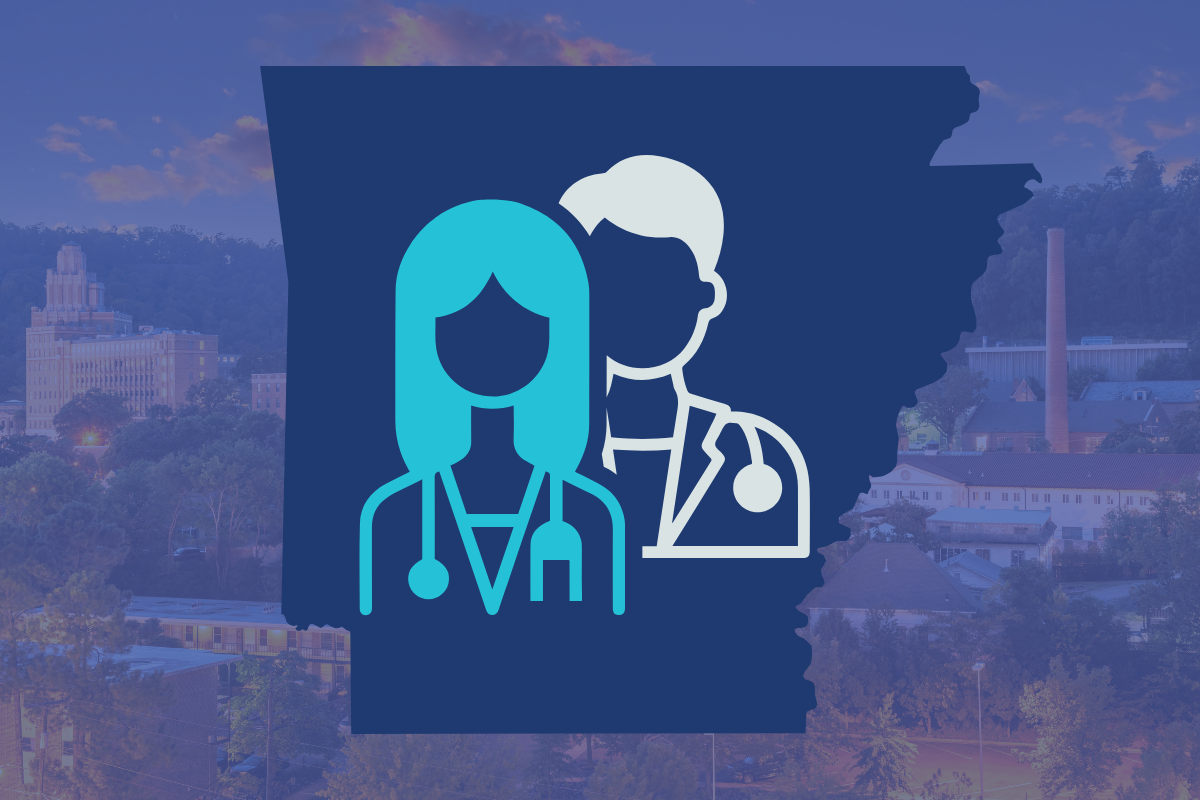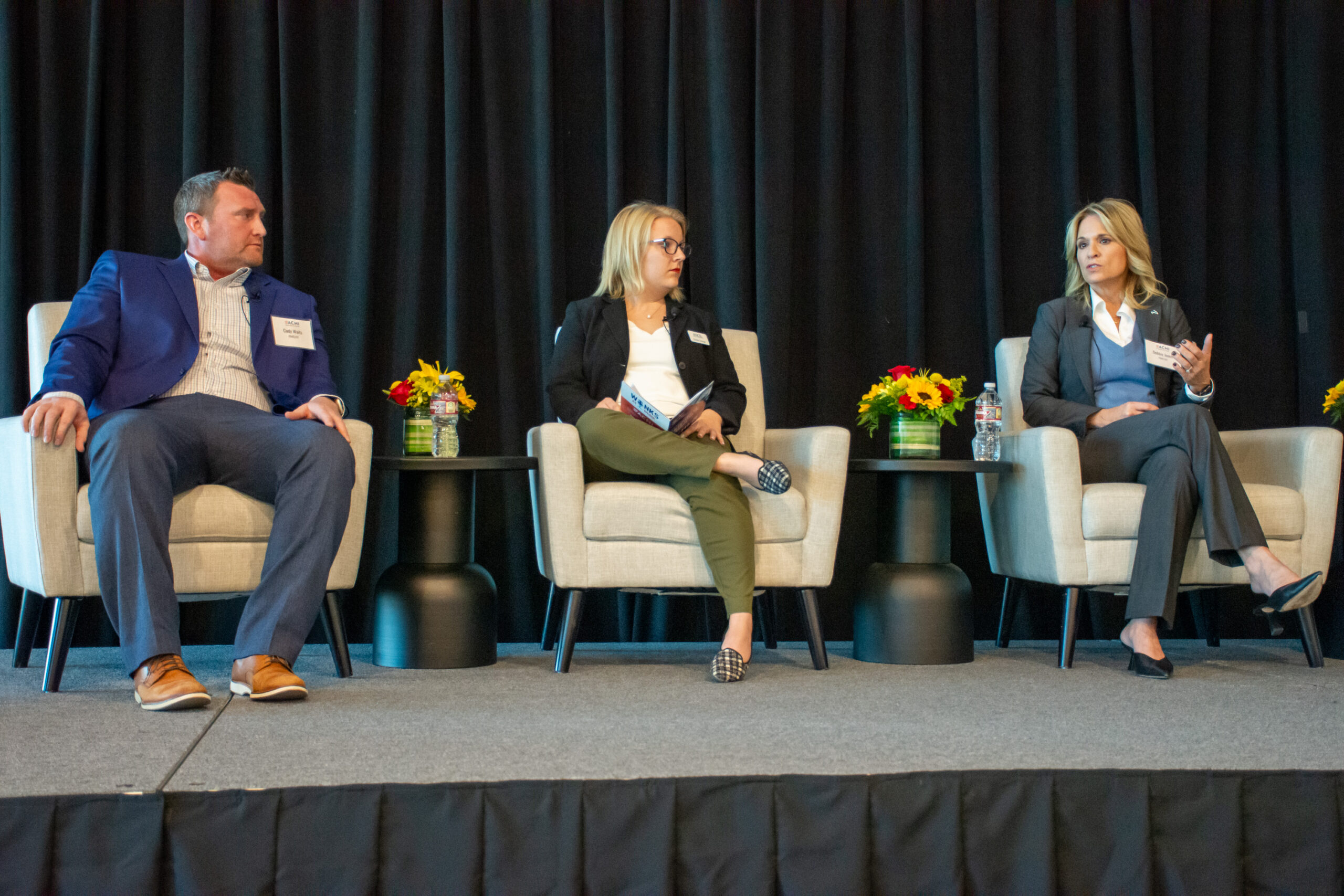Arkansas Healthcare Workforce
This page serves as a resource for ongoing analysis to provide insight into healthcare workforce challenges and opportunities.
Primary Care Physician Workforce Dashboard
The Journey To Become a Physician in Arkansas
Reports and Explainers
News and Updates
Arkansas, like other states, faces a shortage of physicians, nurses, and other healthcare providers. Provider shortages continue to be one of the most pressing challenges faced by healthcare organizations and communities seeking to ensure access to quality care for their residents. The challenge is compounded by geographic maldistribution, with more than one-third of Arkansans living in health professional shortage areas. In 2020, six of the state’s counties had only one full-time primary care physician.
Primary care physician shortages in particular have been associated with higher rates of preventable emergency department visits. Conversely, greater primary care physician supply has been associated with earlier diagnosis of disease, lower mortality, and lower costs.
The state has made considerable progress in developing the health workforce pipeline following a statewide strategic planning effort, but addressing the challenge requires a significant, growing commitment to ensure a stronger, larger, more coordinated, and robust health workforce that can meet the state’s future health and healthcare needs.
PROFILE OF THE PRIMARY CARE PHYSICIAN WORKFORCE IN ARKANSAS
ACHI has developed an interactive dashboard to examine the primary care physician workforce in Arkansas. The dynamic tool, based on 2019 and 2020 data, displays rates of active primary care physicians — i.e., primary care physicians actively practicing, as evidenced by claims data — per 10,000 residents, both statewide and by county. The dashboard also provides information on physician activity status (full-time, part-time), physician demographics, and the mix of payer types among physicians’ patients.
This is the first time that Arkansas’s primary care physician workforce has been profiled in this way. The dashboard and accompanying report are intended to help characterize the state’s healthcare workforce to inform clinical leaders and policymakers regarding decisions that impact provider access for Arkansas communities.
Data used for this dashboard were obtained from the Arkansas State Medical Board’s licensure files and enrollment, provider, and health insurance claims files from the Arkansas Healthcare Transparency Initiative’s All-Payer Claims Database (APCD).
Key findings based on 2020 data include:
- There were 2,778 active primary care physicians in Arkansas in 2020. There were 9.2 active primary care physicians and 6 full-time primary care physicians per 10,000 Arkansans in that year.
- The data suggest active primary care physicians working less than full-time are crucial to ensuring primary care access. There were 2,958 full-time primary care physician equivalents statewide in Arkansas in 2020, or 9.8 per 10,000 people. This compares to 1,813 primary care physicians actively practicing on a full-time basis in 2020, with 6 full-time primary care physicians per 10,000 people.
- The increasing age of the full-time primary care physician workforce is concerning, with 27% of full-time primary care physicians in Arkansas being 60 or older and early career primary care physicians who are under 45 being more likely to practice less than full time compared to other age categories. This could become a particularly acute challenge for some rural counties which are served by only one or two full-time primary care physicians.

- There were disparities in active primary care physicians by sex, with males representing more than two-thirds (68%) and females representing less than one-third (32%) of active primary care physicians in 2020. The disparity among active primary care physicians by sex narrowed in lower age ranges, suggesting increases in the primary care physician workforce pipeline among females. However, among full-time primary care physicians, wider disparities by sex were observed even among younger physicians, suggesting a preference among younger female physicians for part-time work.
- Although Black and Hispanic Arkansans represent 14.9% and 8.5% of the state’s population, respectively, they only represent 6% and 2.5%, respectively, of the active primary care physician workforce in Arkansas. In counties with large minority communities, cultural and linguistic access barriers could persist without intentional and sustained efforts to diversify the physician workforce.
This work is made possible with funding from the federal Health Resources and Services Administration (HRSA) and support from the University of Arkansas for Medical Sciences. ACHI’s full report on the primary care physician workforce in Arkansas is also available.
The journey to become a physician in arkansas
As of 2020, the state ranked among the lowest in the nation in terms of per capita physician workforce. Arkansas needs to expand its physician workforce pipeline — but these healthcare providers are not created overnight.
This infographic outlines the multi-step journey to become a physician in Arkansas, emphasizing the extensive education and training required.

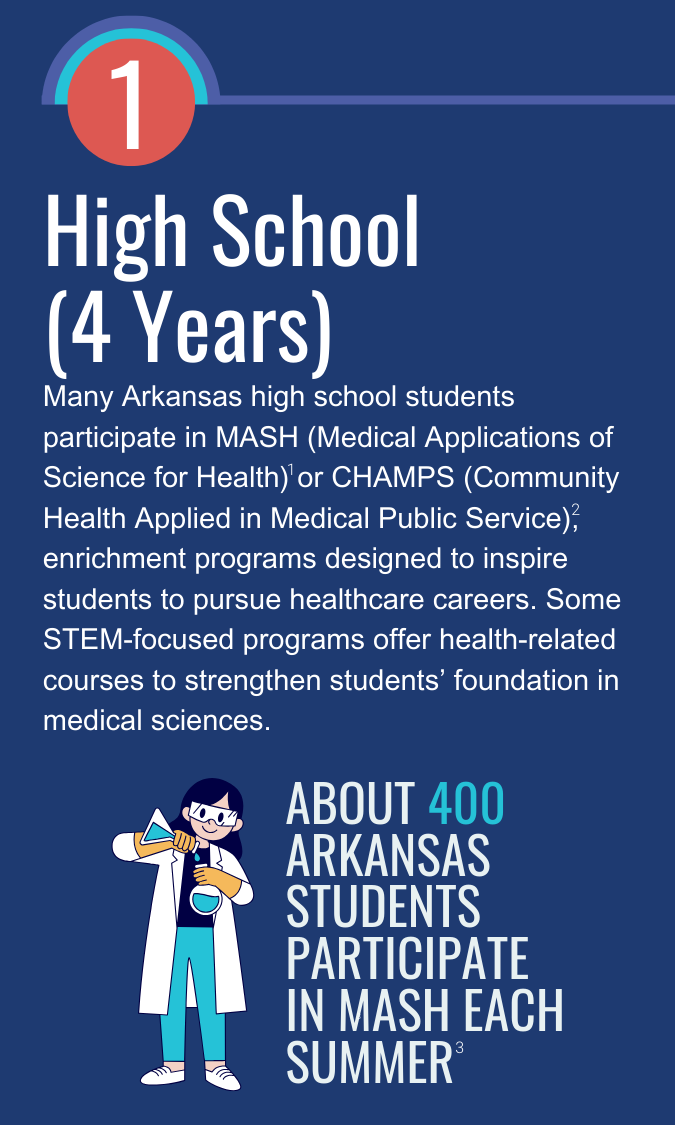
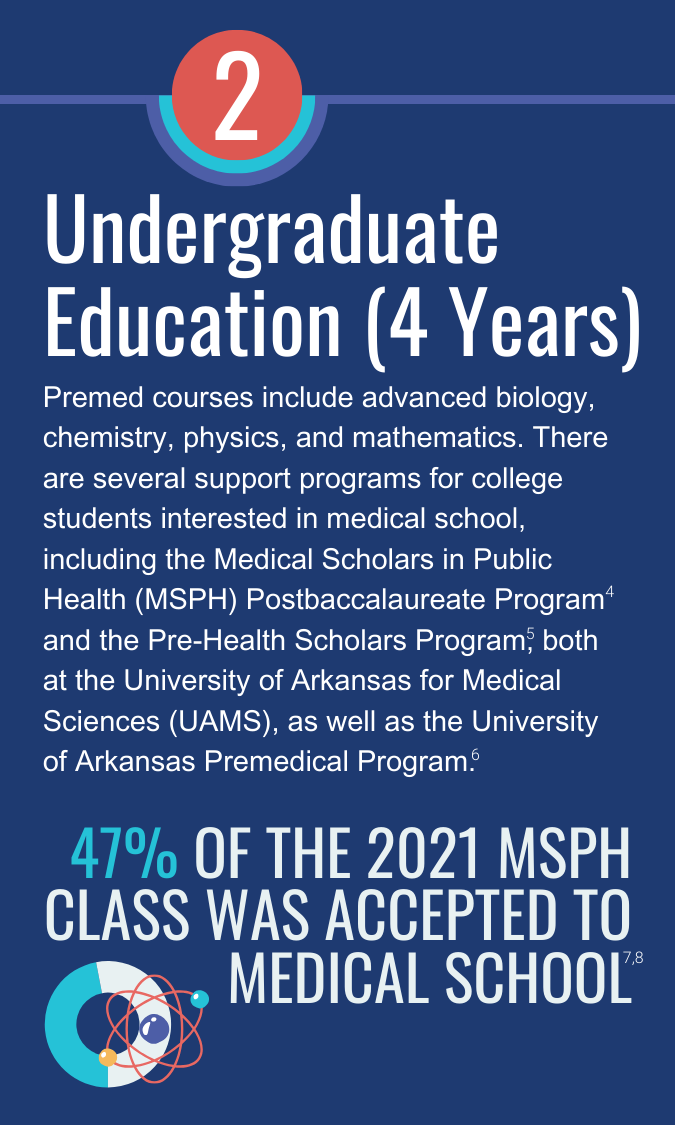

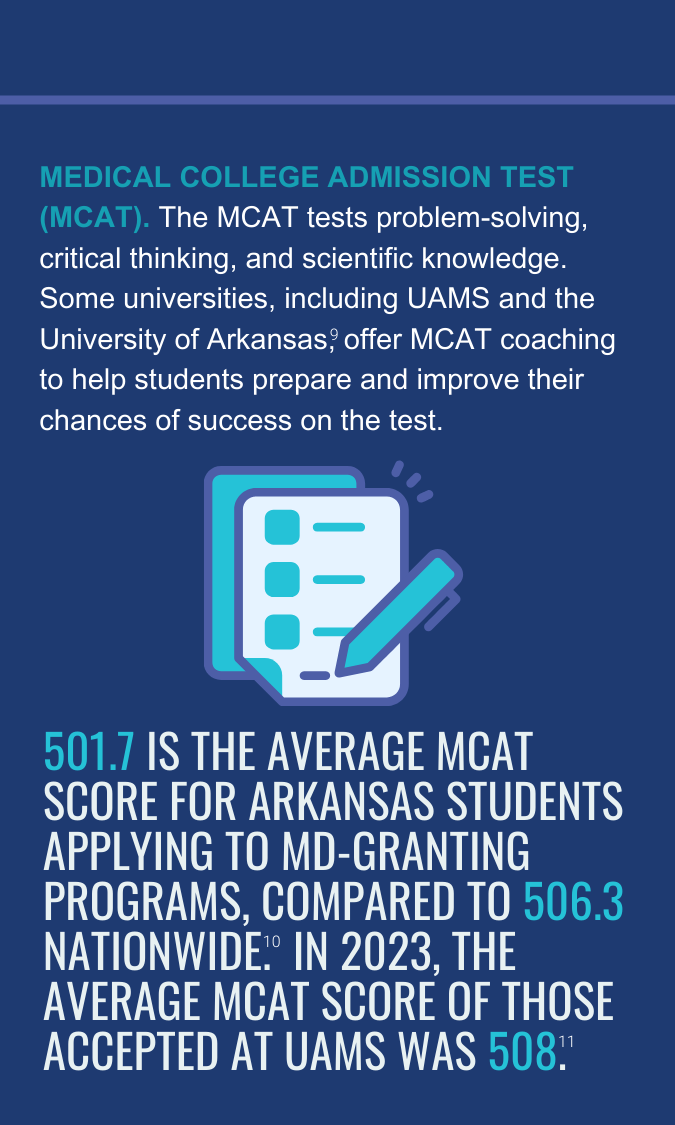
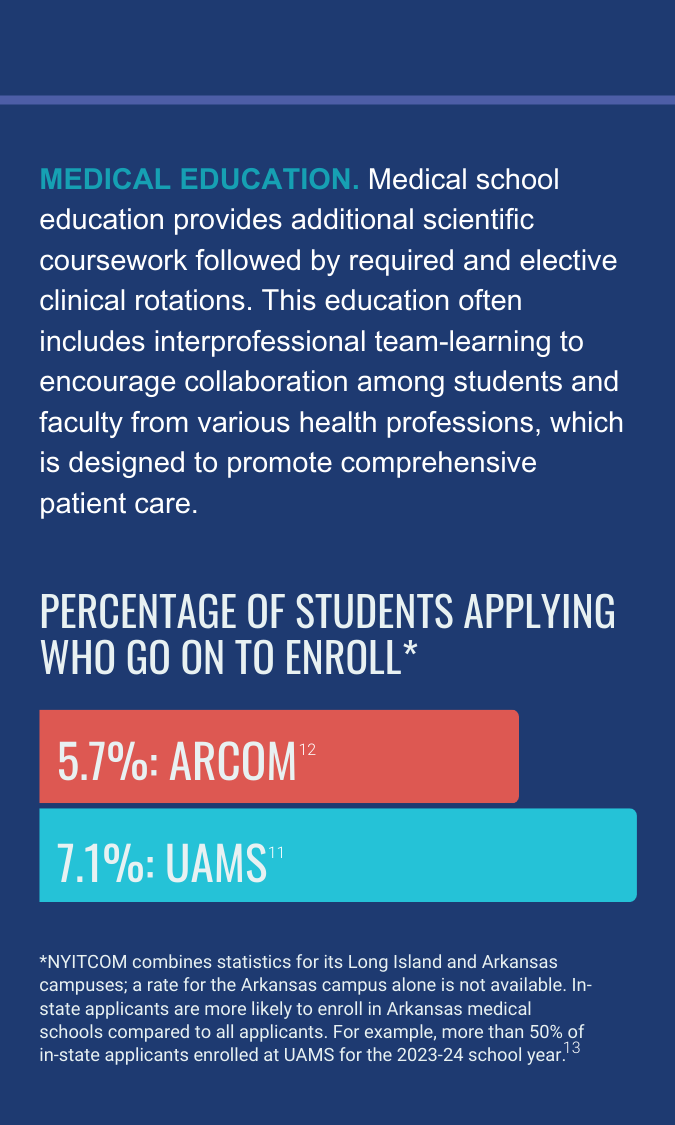
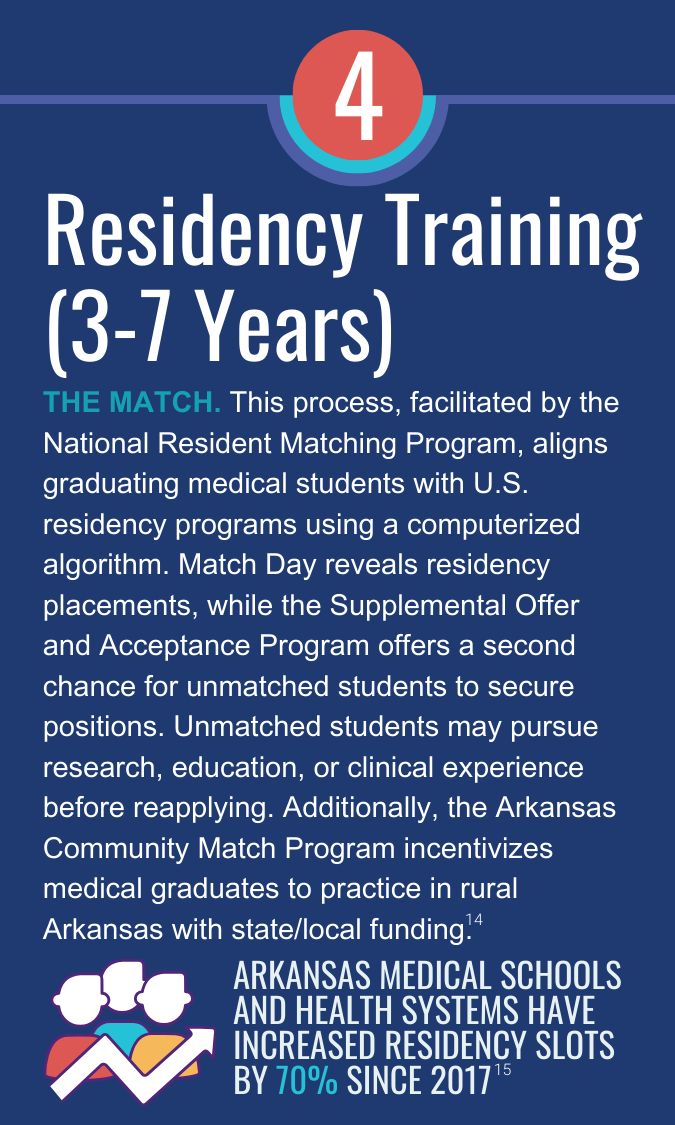
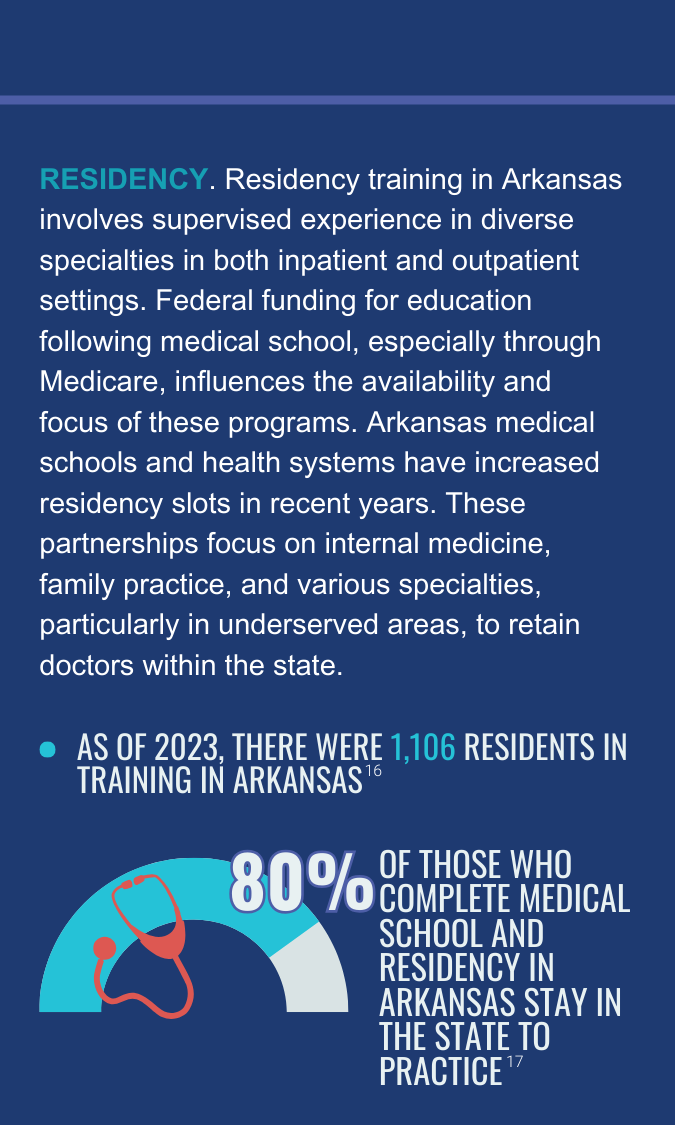
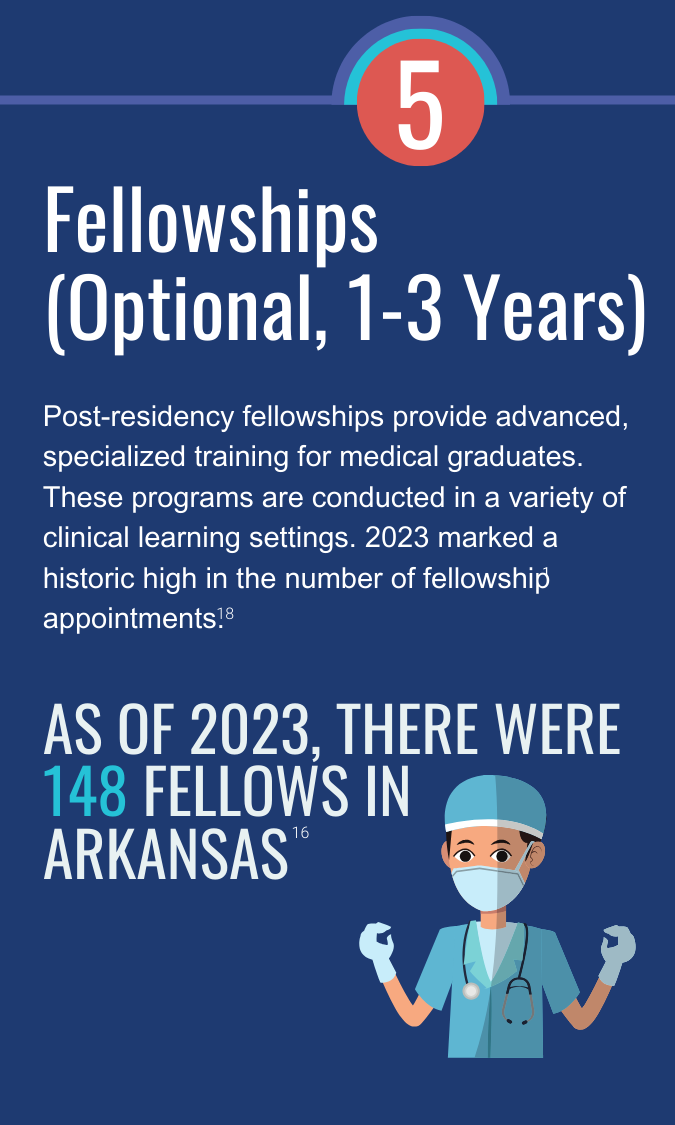
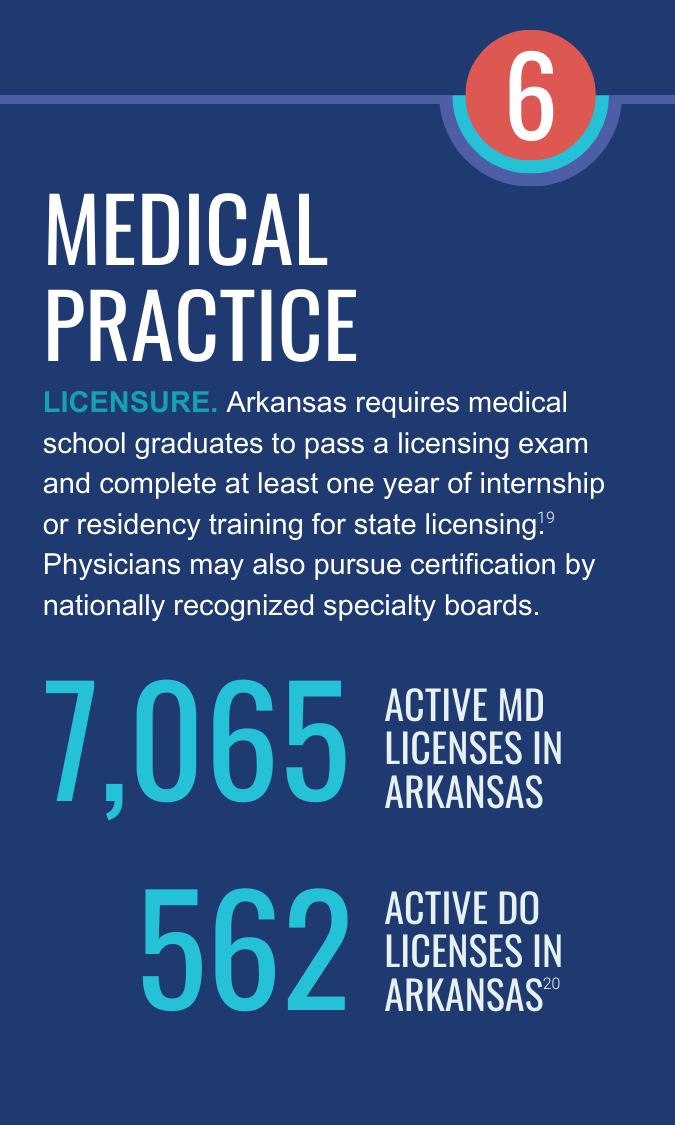

Related Reports and Explainers
Dashboard: Arkansas Primary Care Physician Workforce
Community Health Workers: An Overview
Learning To Fly: Robin Howell
Cultivating interest in healthcare careers among students earlier in the educational process is key to ensuring a sufficient workforce pipeline to respond to the needs of Arkansans. That has been the focus of Robin Howell, senior program manager for regional campuses at the University of Arkansas for Medical Sciences, for more than 35 years. In this episode, host Craig Wilson talks with Howell about the Medical Applications of Science for Health (MASH) program, a summer enrichment camp that allows high school students to learn about health career opportunities, and other efforts to develop a strong physician workforce pipeline in Arkansas. August 10, 2023.



